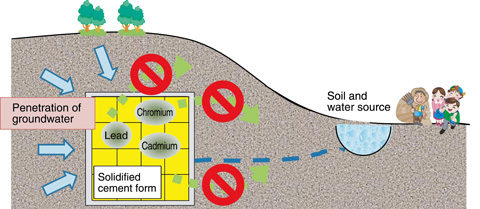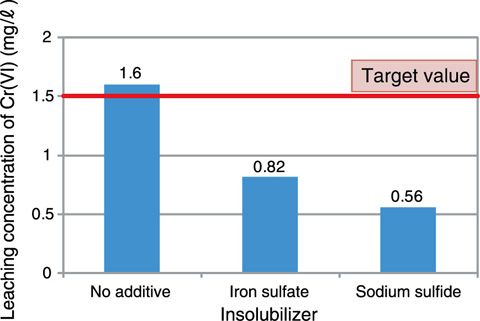
Fig.10-5 Confinement of heavy metals in the solidified form of cement

Fig.10-6 Leaching concentration of Cr(VI)
We incinerate combustible radioactive wastes, and plan to solidify the obtained incinerated ash with cement and bury it in the ground. Cement solidification has several advantages such as the low price of cement and resistance of cement to deterioration caused by radiation. However, when the solidified form comes in contact with water, a small amount of the form may be dissolved in it.
Incinerated ash contains a minor quantity of hazardous heavy metals such as Pb, Cd, and Cr(VI), which are included in plastics and paints (which are combustible wastes). These heavy metals must be confined in the solidified cement form of incinerated ash, because they may be eluted when the solidified form comes in contact with groundwater (Fig.10-5).
We investigated the elution behavior of these metals by using a solidified cement form. A mock form was prepared by mixing 1wt% each of PbCl2, CdCl2, and Na2CrO4 with incinerated ash, cement, and water. The mock form was soaked in a large amount of water, and the metal concentrations in the water were determined. Target values for the leaching concentrations of the heavy metals were determined on the basis of the Waste Management and Public Cleaning Law. The values for both Pb and Cd were found to be 0.3 mg/L and that for Cr(VI) was 1.5 mg/L.
The leaching concentration of Pb was less than 0.1 mg/L and that of Cd was less than the detection limit (0.01 mg/L), both of which were less than their target values. It was thus found that Pb and Cd can be confined in the solidified cement form. Because solidified cement forms are alkaline, the Pb and Cd ions form hydroxide complexes, which are hard to dissolve in water.
However, the leaching concentration of Cr(VI) was greater than its target value, and Cr(VI) was difficult to confine in the solidified cement form. It is known that Cr(VI) is a strong oxidizer and can be easily reduced to Cr(III) by using reductants. Therefore, we prepared solidified cement forms containing iron sulfate or sodium sulfide insolubilizers, which are reductants, and conducted leaching tests using these additives. As a result, the leaching concentration of Cr(VI) was less than its target value (Fig.10-6).
<Previous: 10-1 | Next: 11 Computational Science and E-Systems Research >